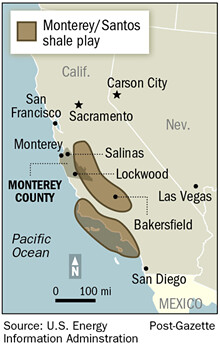 Making more than is necessary from a “bridge fuel”?
Making more than is necessary from a “bridge fuel”?
by Brian Leubitz
You may recall from this post a few months back that the Obama Administration is currently considering oil-company backed proposals to allow unlimited exports of Liquid Natural Gas (LNG). So far the US Department of Energy has approved two proposed projects to export LNG, and more than a dozen are pending approval.
Yet questions continue to be raised about the impacts that allowing for unlimited LNG exports would have on our economy and environment. And all this is putting aside the very real dangers of fracking to get at the natural gas: earthquakes, tainted water, etc.
First of all, consider that the impacts of climate change are already arrived. In 2011-12, 25 climate-related extreme weather events caused a minimum of $1 billion in damages each. Luckily, U.S. carbon pollution is at its lowest point since 1994 but the U.S. EIA predicts that U.S. carbon pollution will began to rise by the end of the decade. Part of this drop has come from the modern fuel economy standards reducing emissions. Another factor has been the boom in LNG, allowing electricity generation to move away from coal and other fossil fuels.
The LNG boom has a large role to play in reducing carbon emissions because it burns much cleaner than other fossil fuels. In the short term it can be used to replace coal in electricity production. Natural-gas vehicles are increasingly being used in both public and private fleets as a cleaner, and less expensive, alternative to traditional vehicles. LNG is a veritable bridge to a clean energy future and can replace coal while we develop, transition to, and implement zero-carbon electricity systems.
But LNG can only be a bridge to the future, not the future itself. A recent report by the Center for American Progress(PDF) found that the use of natural gas must peak no later than 2030 if the U.S. is to avoid the worst impacts of global warming.
Beyond the near term, however, there needs to be a swift transition from natural gas to zero-carbon energy, particularly in the generation of electricity. … Heavy investment in natural-gas generation capacity could crowd out investments in long-term solutions such as wind, solar, wave, and other renewable electricity sources. A rapid shift from natural gas to zero-carbon energy is therefore critical. Our analysis finds that the use of natural gas must peak no later than 17 years from now, in 2030-which is sooner than many policymakers currently realize is necessary-if the United States is to meet its climate goals and avoid the worst impacts of global warming.(Center for American Progress (PDF))
The transition from LNG to zero carbon energy must be rapid. While LNG combustion emits less carbon than coal, it still produces carbon emissions. Extended reliance on natural gas would make it difficult, if not impossible, to meet climate stabilization targets. Failure to do so risks increased frequency and severity of extreme weather, further hurting middle- and lower-income Americans. If the damages of the previous 25 extreme weather events were any indicator, the cost of disaster relief would outweigh short-term economic benefits.
Natural gas must remain only a bridge, and any expansion in LNG production to meet increased demands must be followed by, and not replace, increased investment in zero-carbon energy sources like wind, solar, and wave energy. Expansion also needs to be done such that it is sustainable from an environmental standpoint; we cannot overproduce and overstretch our natural gas infrastructure. The U.S. currently produces as much natural gas as it consumes. Any expansion of LNG projects should follow this and only produce as much natural gas as is necessary to meet the increased demand that will come from moving away from coal and other fossil fuels towards a zero-carbon energy future.
UPDATE: It turns out that as I was writing this, I missed the Obama administration approving a new LNG terminal in Louisiana. If we are to avoid a glut of terminals here, we have to make our stand at the state level.


